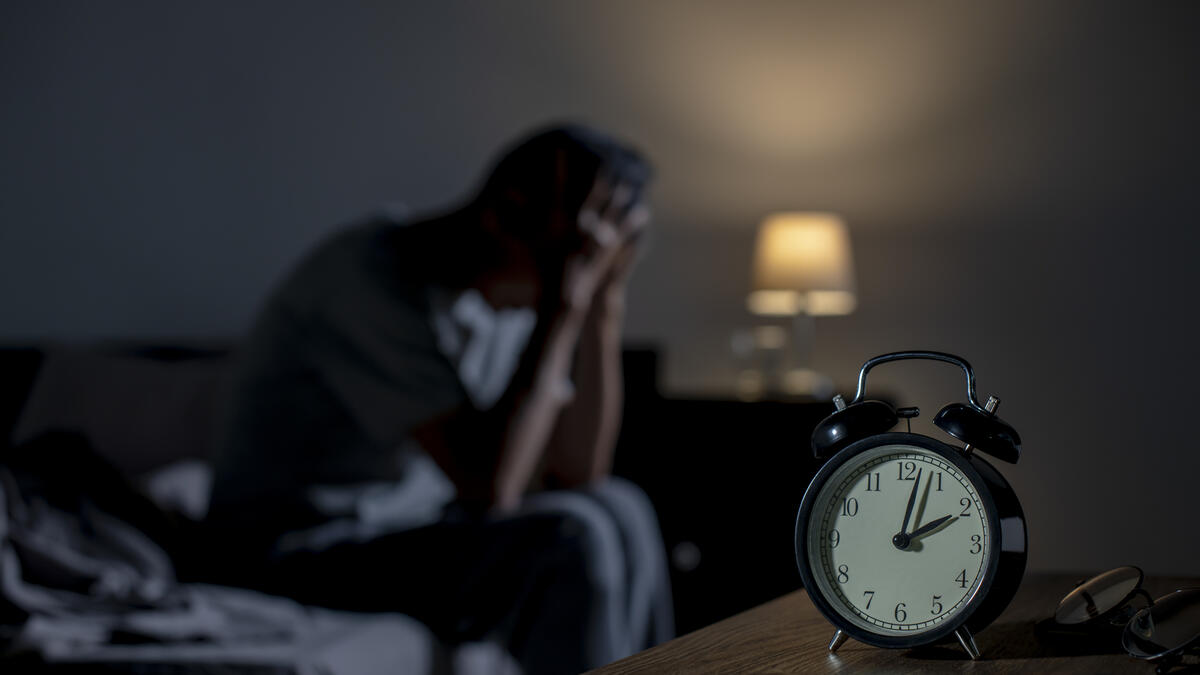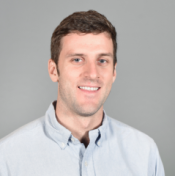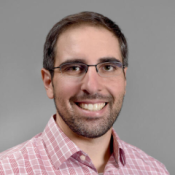Written with contributions from Jennifer Moore, T. Denny Sanford School of Social and Family Dynamics
Occasional sleepless nights are common for many people. But if you are middle-aged and enduring long stretches of sleepless nights, you are not alone.
A new study reveals that almost 40% of those born in the 1950s and 1960s aren’t getting enough sleep. They are struggling to fall asleep and stay asleep.
That’s nearly 10% higher levels of insomnia symptoms than those in older age groups.
“If 40% of the population had a health condition or disease, it would certainly be considered an epidemic or crisis,” said Connor Sheehan, co-author of the study that was released in February.
Sheehan is an assistant professor at Arizona State University's T. Denny Sanford School of Social and Family Dynamics. His research uncovers patterns in public health stemming from social inequalities and their influence on sleep quality and duration.
The study was based on data collected from more than 191,000 people that participated in either the National Health Interview Survey done by the Centers for Disease Control and Prevention or the Health and Retirement Study done by the Office of Disease Prevention and Health Promotion between 2006 and 2018.
The results coincide with increasing research that shows this cohort in particular is languishing in terms of their health.
“I think this coupled with increases in health conditions and deaths in this age group really make them important to understand,” Sheehan said.
In honor of National Sleep Awareness Week this March, ASU News caught up with Sheehan and Frank Infurna, co-author of the study and associate professor in ASU’s Department of Psychology, to find out why this age group is struggling to catch their z's.
Editor's note: Answers have been edited for length and clarity.
Question: What initially drew you to study the sociology of sleep?
Connor Sheehan: I have always loved to sleep. It is probably my favorite thing to do, especially napping. I even tried to learn about my own sleep with a sleep tracker app, to see how I was doing and what predicted good versus bad sleep. Then as a postdoc, I had a really great mentor who studied sleep and pushed me to think about how social factors influence sleep across the population.
Q: How do socioeconomic disparities manifest in sleep patterns, and what implications do these disparities have for overall health outcomes?
Sheehan: There’s some important nuance here, but at the population level, we find large educational differences in sleep, with people with more educational attainment generally — but not always — sleeping better. If you are sleeping well, you get immediate benefits such as better immune functioning, being less cranky or being better able to work effectively at your job. But there are also long-term benefits such as lower risk of such serious chronic conditions as heart disease.
Question: What made you decide to study middle-aged sleep patterns?
Sheehan: We wanted to look at how sleeping patterns have varied based on what decade you were born in and found that among adults aged 50 and older from 2006 to 2018, there were pretty large differences in self-reported sleeping patterns based on the decade someone was born.
My colleague, Frank Infurna, found that those born in the 1950s and 1960s have been doing a lot worse than the birth cohorts born before them, even at the same ages. We were curious if these declines in well-being were also apparent for sleeping patterns. That is, if the middle-aged population were sleeping worse.
Q: What did you choose this particular age group to study?
Frank Infurna: We chose middle-aged adults because much less developmental research has focused on this age period, ages 40 to 65.
We were particularly interested in studying middle-aged adults because of the vital role they play in society. Middle-aged adults constitute most of the workforce, while also supporting the needs of younger and older generations in the family.
Furthermore, recent research has shown that life expectancy in the U.S. is stagnating if not declining ... and middle-aged adults today are reporting poorer mental and physical health compared to same-aged peers in the 1990s and early 2000s.
Q: What were your findings? Why is this age group more susceptible to sleep problems?
Infurna: We believe they are more susceptible to sleep issues because of the numerous roles that they are balancing.
Today's middle-aged adults are experiencing greater economic instability and inequality, largely due to the Great Recession, and more recently, the COVID-19 pandemic. They are also increasingly involved in caregiving responsibilities for aging parents and in-laws.
They are contending with these changes in the midst of a shrinking social safety net in the form of few employment policies pertaining to paid family leave and increasing health care costs that are straining household budgets. Middle-aged adults have also very quickly adopted smartphones, at least compared to older cohorts, and these can really distort sleep.
Q: Sleep disorders are increasingly recognized as a public health concern. How can sociological insights inform interventions and policies to improve sleep health on a societal level?
Sheehan: Social policies have important implications for sleep. Dr. Infurna and I have argued that the sleeping problems in America might be reduced by addressing broader social inequities.
For instance, we propose that policies such as improving stagnating wages, improving social safety nets, decreasing prices and inflation, making housing more affordable, helping with student loan debt and providing paid parental and sick leave would likely improve the declining sleep of Americans.
More Health and medicine

Making medicine side-effect free
Many drugs that address medical conditions can come with serious side effects. In drug commercials, the litany of potential side effects is often longer than the benefits being touted. Carl…

Diagnostic research happening at ASU focused on detecting diseases earlier to save lives
It was one of America’s founding fathers, Benjamin Franklin, who may have foreshadowed today’s health care innovation when he quipped the adage: An ounce of prevention is worth a pound of cure.In…

Fighting the fungus among us
It starts with a spore.When inhaled, spores of the coccidioides fungus can cause coccidioidomycosis — better known as valley fever. The spores may be fungi, but they are no fun.Valley fever usually…




